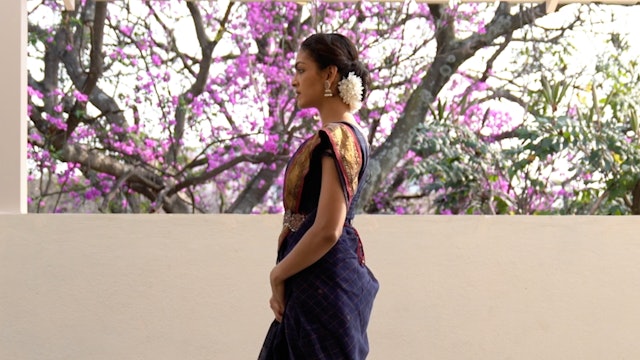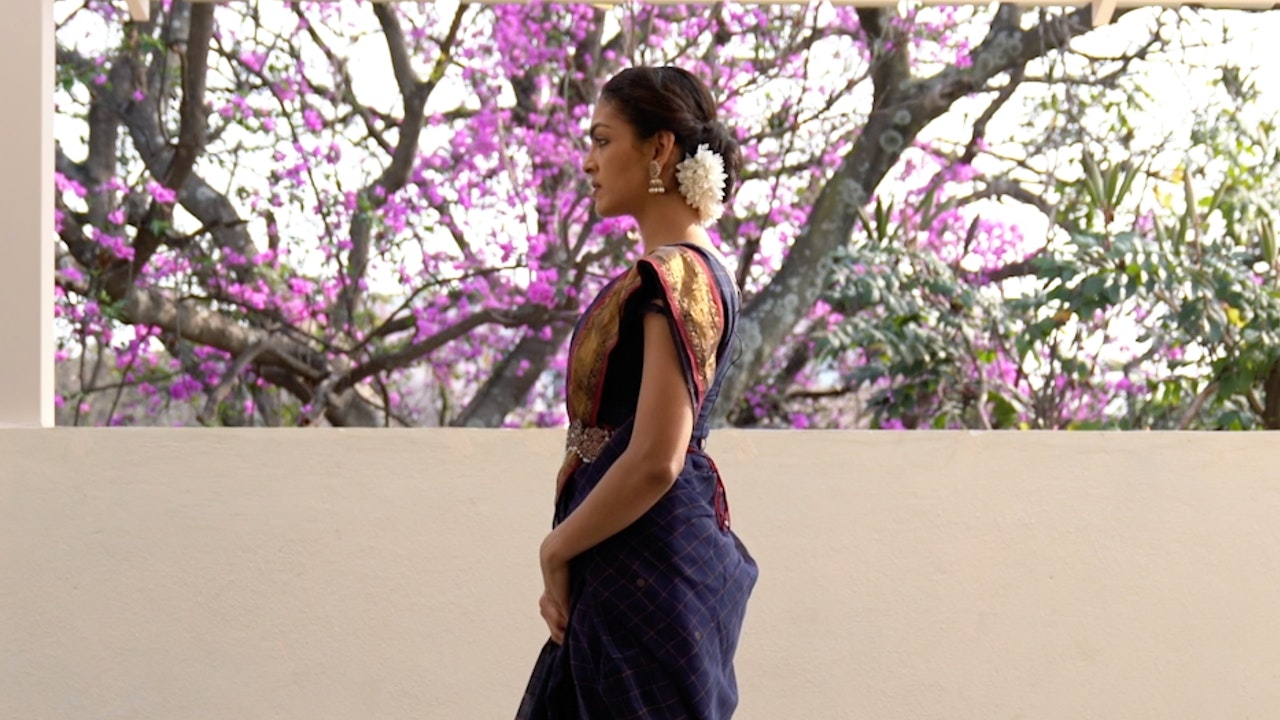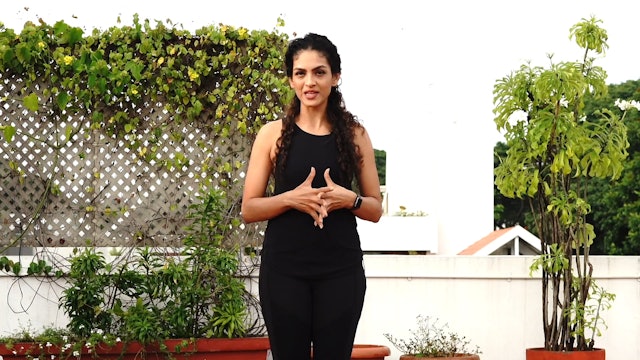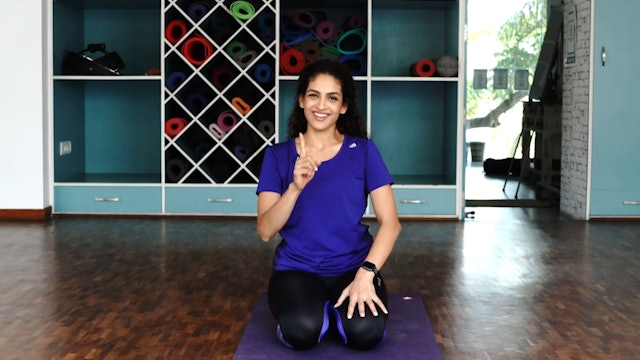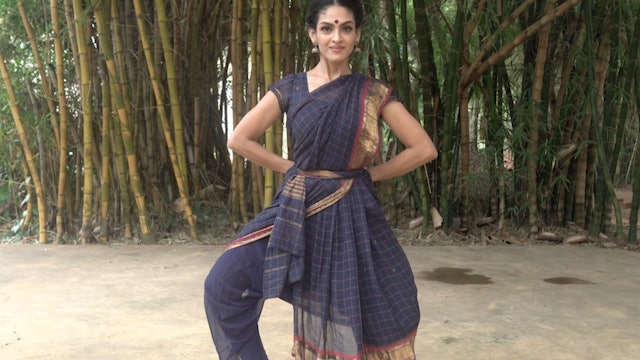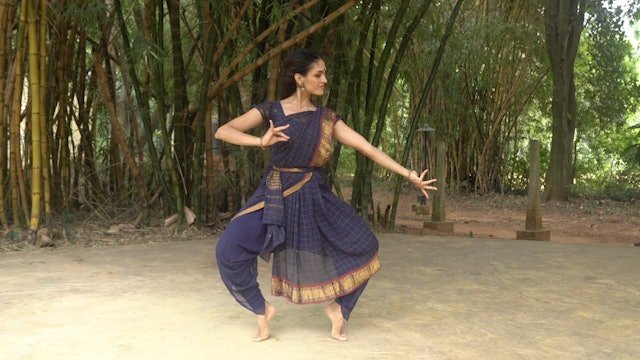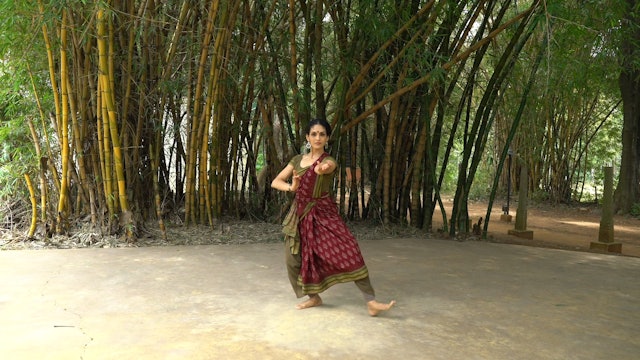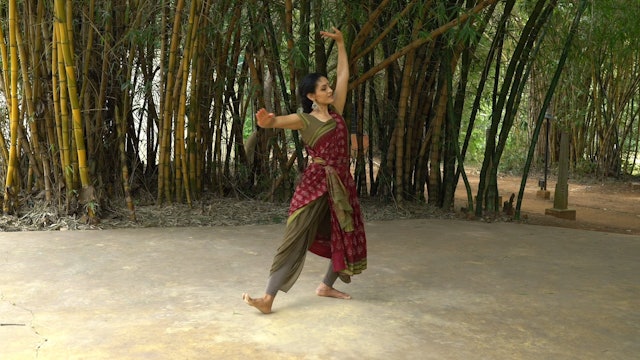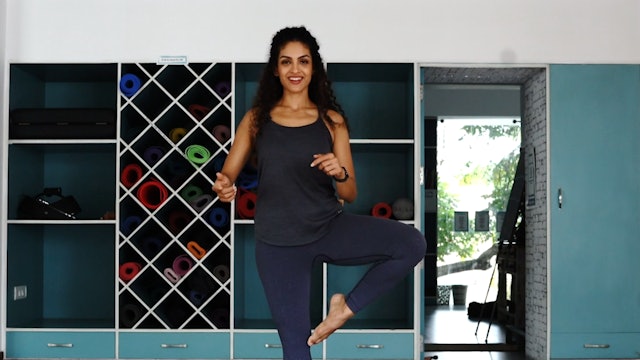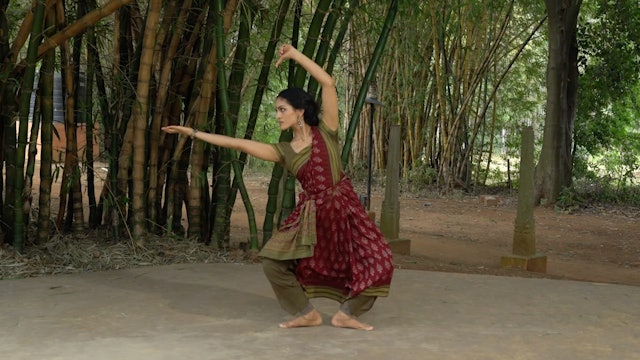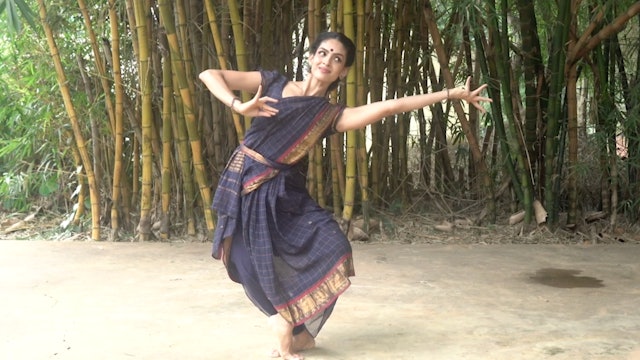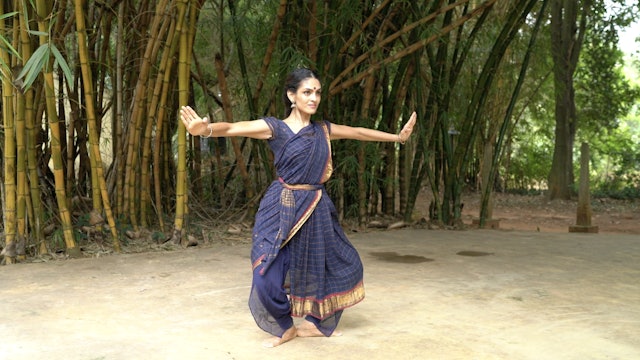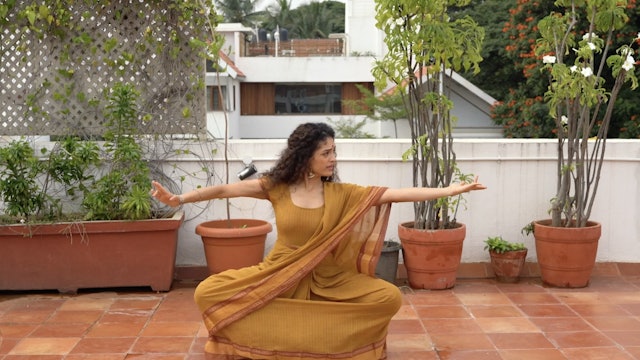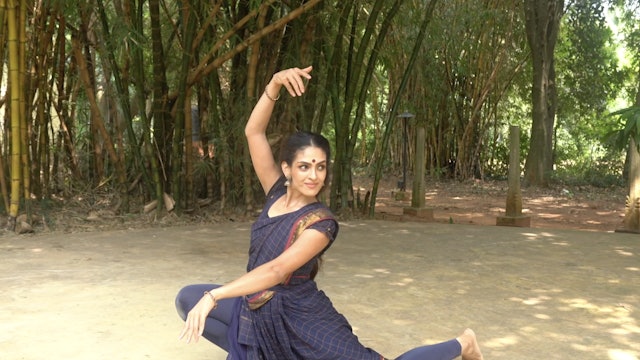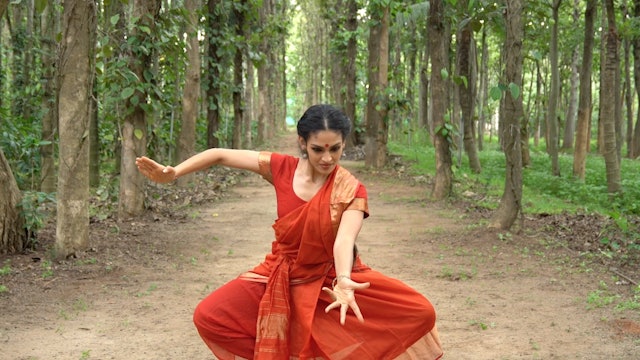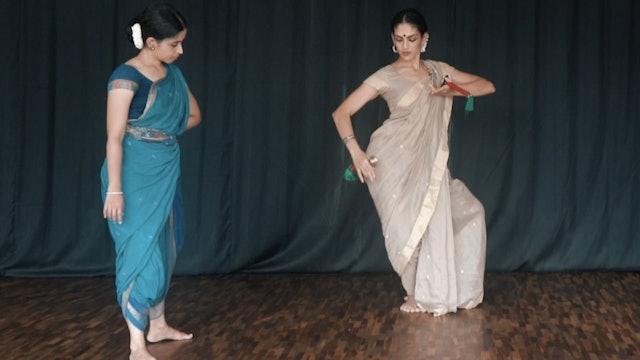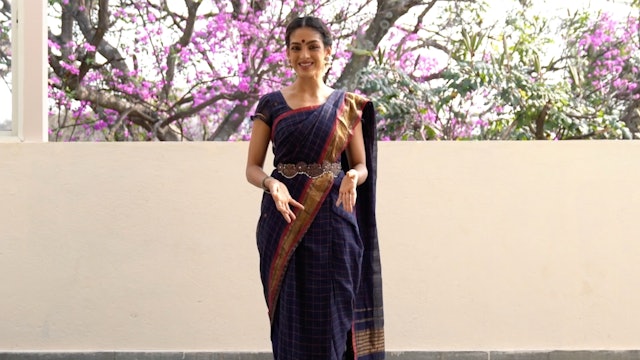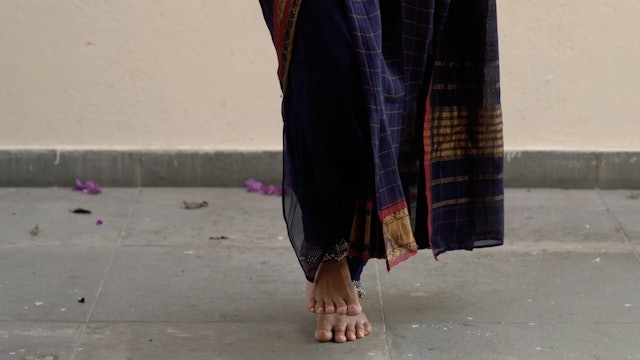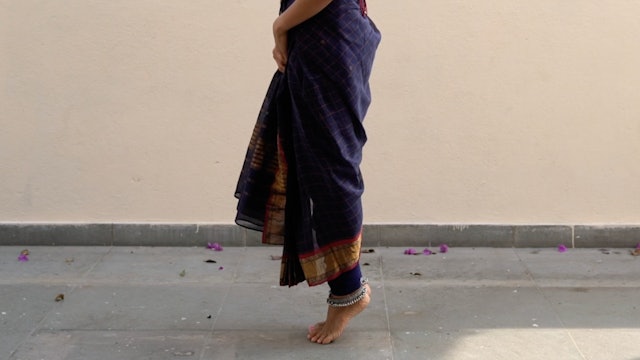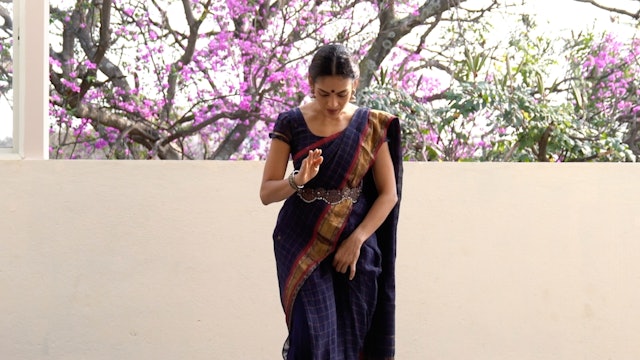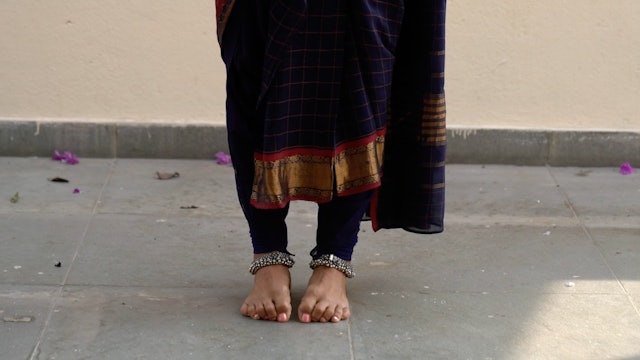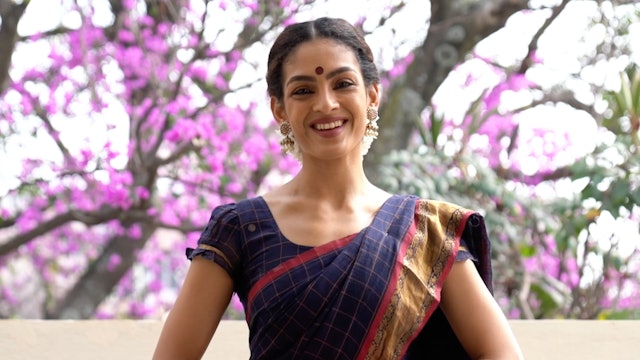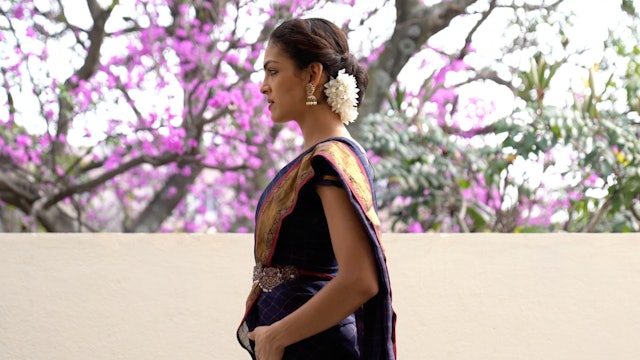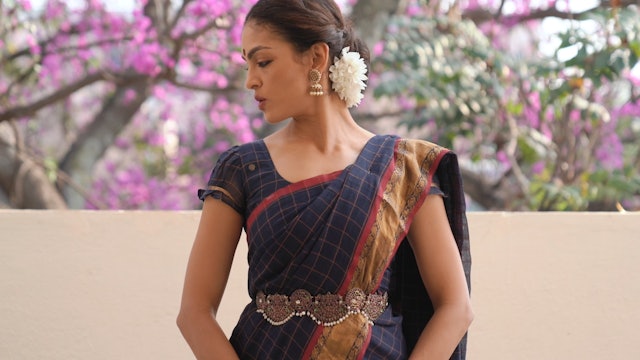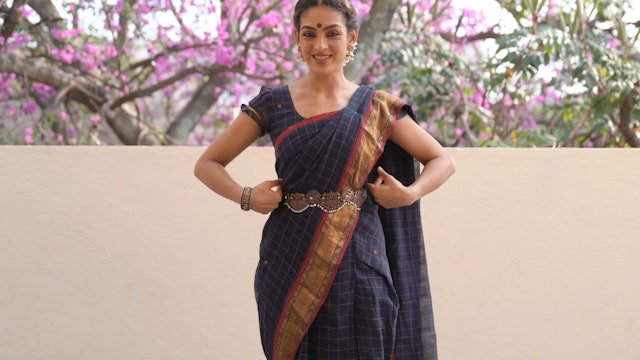-
The complete Raadha Kalpa Warm Up: Level 1
This Warm- up is quite a bit more demanding than the previously introduced sequences, so please make certain that you have practised the following though the past months, atleast 5 times each, slowly with awareness before doing this warm-up.
Legs and core 1, 2
Obliques and flat back
Warm up Iso... -
Hip Stabilisers: Gluteals, rotators, adductors.
This works on all the muscles that stabilise at the hip joint. These muscles are needed to lunge with stability, squat with proper muscular engagement and also balance on one leg. These muscles will help the dancer develop stability while dancing and also prevent injuries in the process.
You mu...
-
Thattu Mettadavu 5 : Sankeernam
This Adavu has two components, a tapping action with one foot that comprises of the Thattu, and the Udgattitham action on the other leg with a heel. Sometimes both the tap and the Udgattitam can happen on the same foot, depending on the Jathi.
Pointers:
- Try to make sure the heel is lifted prop... -
Kuditta Mettadavu: Variations
The Kuditta mettadavu, named so because of the combination of a small jump and then the dropping of the heel, is usually done with hands to the side and then a small cross at the wrists.
These variations, continue with the same movement of the feet while changing the torso and arm movements.
-... -
Teermana Adavu 1
The Theermana or Makutadavu, is placed at the end of a Korwe or Jathi in specific rhythmic patterns, to create an ending.
The leg is either placed outstretched directly in front or at a diagonal of 45 degrees. The foot is flexed and the heel strikes the floor. In the Raadha Kalpa method we begi...
-
Theermana Adavu 2
The Theermana or Makutadavu, is placed at the end of a Korwe or Jathi in specific rhythmic patterns, to create an ending.
The leg is either placed outstretched directly in front or at a diagonal of 45 degrees. The foot is flexed and the heel strikes the floor. In the Raadha Kalpa method we begi...
-
Theermana Adavu 3, variation
The Theermana or Makutadavu, is placed at the end of a Korwe or Jathi in specific rhythmic patterns, to create an ending.
The leg is either placed outstretched directly in front or at a diagonal of 45 degrees. The foot is flexed and the heel strikes the floor. In the Raadha Kalpa method we begi...
-
Cat jump prep
This series will deal with a number of short exercises that will help the student develop awareness and alignment when jumping. It must be done in combination with the strength exercises to have maximum benefit.
Please commence this exercise only after doing hip openers, warming up your ankles, ...
-
Korwe Adavu (utplavana 1 )
The Korwe adavu is a combination of previously introduced foot and body articulations. It is called a Korvey adavu as it cannot be placed into any specific category. It has a Tattu, naatu, Bramari, Serikal amongst other movements. Some Korwe adavus also use a Kudittam in the feet.
Things to kee...
-
Korwe Adavu (utplavana 2 )
The Korwe adavu is a combination of previously introduced foot and body articulations. It is called a Korvey adavu as it cannot be placed into any specific category. It has a Tattu, naatu, Bramari, Serikal amongst other movements. Some Korwe adavus also use a Kudittam in the feet.
Things to keep...
-
Korwe Adavu (utplavana 3 )
The Korwe adavu is a combination of previously introduced foot and body articulations. It is called a Korvey adavu as it cannot be placed into any specific category. It has a Tattu, naatu, Bramari, Serikal amongst other movements. Some Korwe adavus also use a Kudittam in the feet.
Things to keep...
-
Mandi Adavu : Instructions
The Mandi adavu is named such because there is a small jump on the balls of the feet after which the knee is placed on the ground.
Things to remember:
- stay lifted as much as possible without sitting on the heels
- keep pushing the thighs back and the heels forward to keep your muscles engaged... -
Mandi Adavu Variations
The Mandi adavu is named such because there is a small jump on the balls of the feet after which the knee is placed on the ground.
Things to remember:
- stay lifted as much as possible without sitting on the heels
- keep pushing the thighs back and the heels forward to keep your muscles engaged... -
Khanda Chapu Korwe 1
Please watch the subsequent Talam lectures that incorporate Gati and Yati and revisit this korwe.
The Korwe series continues with a variety of Talams. This is the first Korwe in Khanda Gati that has rhythmic layers of other counts for the adavus on top of the 5 count base.
Gati refers to an int...
-
Mishra Alaripu : Part 1
The Alaripu is the first piece that anyone learns in Bharatanatyam as a student. Alaripu means to bloom. It begins with isolations of the head, shoulders, neck and then progresses into larger movement of the torso.
This Alaripu is in the Mishra Chapu Tala with the 'Tirupugazh' sung at the backg...
-
Gulphā bheda Introduction
The Ankle is considered one of the Upāngas, or minor limbs according to the Sangīta Ratnākara.
Introduction to the movements of the ankle.
-
Gulphā bheda Shloka
The Ankle is considered one of the Upāngas, or minor limbs according to the Sangīta Ratnākara.
The movements of the ankle are important in pure dance and in emotive contexts.
Please refer to the Shloka below for pronunciation. Please note that the separate movements of the head when put togethe...
-
Pārśni bheda Shloka
The heels are considered one of the Upāngas, or minor limbs
The movements are used not only for the precise control in the execution of Nritta but also to communicate meaning in the context of gesture.
Please refer to the Shloka below for pronunciation. Please note that the separate movements ...
-
Thala bheda Introduction
The soles of the feet are considered one of the Upāngas, or minor limbs.
Introduction to the movements in the soles of the feet.
-
Thala bheda Shloka
The soles of the feet are considered one of the Upāngas, or minor limbs.
The movements are used not only for the precise control in the execution of Nritta but also to communicate meaning in the context of gesture.
Please refer to the Shloka below for pronunciation. Please note that the separat...
-
Udara bheda Introduction
Introduction to the uses of the stomach.
-
Udara bheda Shloka
The stomach is considered one of the Upāngas, or minor limbs.
The movements are used primarily to communicate meaning in the context of gesture.
Please refer to the Shloka below for pronunciation. Please note that the separate movements of the head when put together in a Shloka form 'Sandhis', ...
-
Shiro bheda Shloka
The head is considered one of the Angas, or major limbs according to the Natyashastra.
The movements of the head are used not only for the precise control in the execution of Nritta but also to communicate meaning in the context of gesture.
Please refer to the Shloka below for pronunciation. ...
-
Pārśva Bheda Shloka
The side, Parshva is considered one of the Angas, or major limbs according to the Natyashastra.
The movements of the side are used not only for the precise control in the execution of Nritta but also to communicate meaning in the context of gesture.
Please refer to the Shloka below for pronun...
